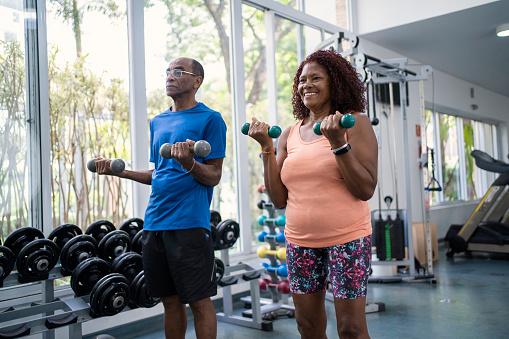This text was written by a TecMundo columnist; finally learn more.
We live in the wave of popularization of artificial intelligence, we ask everything to the newly created OpenAI tool, ChatGPT, already in its new version and it answers us. And if we want exercises for a workout, jogging or weight training?
Before continuing, it is important to say that this text was written about it, not ChatGPT.
When I said I wanted to run 5 km, I asked how I could train. According to GPT chat: “If you want to run 5K, it’s important to start gradually and increase the distance over time”.
Artificial intelligence gives tips such as: If you are not in the habit of doing physical activities like 30 minutes a day, 5 days a week, start with walks; it then considers progress and recommends short 1-2 minute runs interspersed with 1-2 minute walks.
Even the GPT takes speed into account: “During races it’s important to maintain a speed that’s comfortable for you. If you’re out of breath or in pain, slow down or walk again”. The progression recommendation is also consistent: “Try to increase the distance by 10% each week”.
ChatGPT doesn’t make the mistake that most of the exercise science field makes: focusing on aerobic training and forgetting about muscle-building sessions: “In addition to running, resistance training is important to strengthen your muscles and prevent injuries. Strength training with weights, push-ups, and squats can help.”
The end point is rest, recovery and hydration. The ending couldn’t have been better: “Remember that every person is unique and may need to tailor training to their needs and abilities. If you have any questions or concerns, consult a healthcare professional before starting any exercise program,” says AI.
ChatGPT did what many gyms already do by requesting a 5 times a week frequency training for hypertrophy, repeating the training without considering the individual’s characteristics (preferences and needs). The biggest problem is the dose, that is the training volume, and indeed the difference between the poison and the drug is the dose.

If we apply this to a novice individual who has never been to the gym, the recommended exercise with at least 10 sets per muscle group is a recipe for high latency onset muscle soreness – something that can scare the practitioner back into going back. for new exercises. There was no recipe for the warm-up that was an essential part of the session, although at the end was the advice “remember to warm up and stretch properly before each workout”.
Although aspects such as volume, intensity and progress are taken into account, there are basic principles of physical conditioning that must be followed for consistent training and better results, and when we repeat ready-made workouts, one of the main principles suffers: the principle explains the differences between people and how we respond to stimuli such as physical training. biological individuality.
So the fitness blogger’s workout probably won’t work for you. Another principle is the principle of adaptation, since responses to training are highly individual, we do not know when and if the individual will be able to adapt to the initial stimulus and how to proceed from there (this includes another principle: overloading).
In addition to the overload, for our development we need the continuity principle, in which we are motivated enough to continue the activity over time and reap the benefits. Finally, the principle of specificity assumes that certain stimuli promote certain adaptations. In this way, both bodybuilding and running can be practiced for another purpose, such as performing better in a sport.
ChatGPT can provide information about strategies to promote healthy lifestyle choices, such as broad accessibility and free regular physical activity. In fact, the tool can inform people in the early stages of behavior change, such as an ordinary person with no previous experience who wants to start the gym or run a few kilometers. however, when we consider the application of knowledge through the prescription of education, nothing can replace a human health professional’s performance in dealing with the complex and multifactorial behavior that is physical activity. The same novice practitioner may need to feel supported, comfortable, and cared for.
It’s like thinking that a pill can alter the effects of exercise. As a PE professional who prescribes, guides and supervises, we are apparently a long way off, as physical exercise is a broad, felt experience with benefits across different spectrums: physical, physiological, social and psychological, and worth living. from just taking a pill or having a robot tell us how to act.
We still need (and perhaps always will) need a person’s insight to help another person in their behavior.
fabio dominski He holds a PhD in Human Movement Sciences and a degree in Physical Education from Santa Catarina State University (UDESC). He is a university professor and researcher at the Sport and Exercise Psychology Laboratory (LAPE/CEFID/UDESC). He is the author of Physical Exercise and Science – Facts and Myths and presents the Physical Exercise and Science program on UDESC Joinvile radio (91.9 FM); The program is also available at: podcast on Spotify.
Source: Tec Mundo
I’m Blaine Morgan, an experienced journalist and writer with over 8 years of experience in the tech industry. My expertise lies in writing about technology news and trends, covering everything from cutting-edge gadgets to emerging software developments. I’ve written for several leading publications including Gadget Onus where I am an author.













